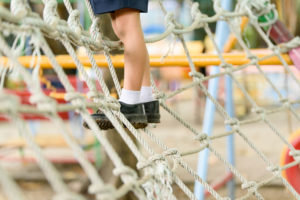National Child Protection Week commences on Sunday, 4 September 2016. It is being widely promoted to invite all Australians to play their part in promoting the safety and well being of children and young people. Organised annually by the National Association for Prevention of Child Abuse and Neglect (NAPCAN), the theme for 2016 is ‘Stronger Communities, Safer Children’. Their website goes on to explain that this theme has been designed to ‘emphasise the importance and value of connected communities in keeping children and young people safe and well.’
In a 2014 School Governance article, it was noted that schools play a crucial role in recognising and reporting incidents of abuse affecting their students and educating their community on child safety. Sadly, as some of our previous articles have described, it’s often members of school communities who are also common perpetrators of abuse against children in their care.
However, a quick review of the NAPCAN website indicates that most States and Territories have only a few events listed for this week. How many schools realise that National Child Protection Week commences on Father’s Day every year and has done so for 25 years?
It appears that amongst the church groups, kindergartens and community groups who had listed activities, there was only one primary school listed who will be running classroom activities relating to child protection on Monday 5 September. Given that many schools pride themselves on being known as safe, inclusive, learning communities, there is no doubt that they already involve their students, staff and the wider community in child protection activities. However, perhaps being a part of this national event and raising the awareness of child protection at this level may further highlight the good work that your school may already be doing?
In the 2015 edition of a Guide for Creating a Child-safe Organisation produced by the Victorian Commission for Children and Young People, in their opening comments, the two Commissioners state: We all have been entrusted with an obligation to do the best we possibly can to keep our children safe from harm. The abuse of children should not be tolerated in our community. Never has the spotlight shone so brightly on the need for everyone to actively protect children from harm.
In addition, recent legislative changes in many States and Territories including the ACT and Queensland, and changes to the Standards in Western Australia and Victoria have focused on child protection issues and the requirements for schools to show evidence that they are compliant and that they are engaging in child safe programs and activities. Although it is clear that many of the requirements are related to risk mitigation, schools often look at child protection in a more holistic and preventative manner with the child at the focus of their strategies. NAPCAN have defined these prevention activities as: ‘an action or a set of actions designed to stop something before it actually occurs’.
The Royal Commission, using the opinions of a panel of 40 Australian and international experts, has just released a new research report examining what elements institutions should adopt in order to be child safe. The panel agreed that the elements were relevant, reliable and achievable. Following this testing process, the Commission confirmed that there are 10 key elements that are needed to create a child safe institution. The report is titled Creating Child Safe Institutions and there is also an accompanying research paper titled ‘Key Elements of a child-safe organisation’. This week, another School Governance article deals with this in more detail.
The key elements listed in the report are:
1. Child safety is embedded in institutional leadership, governance and culture.
2. Children participate in decisions affecting them and are taken seriously.
3. Families and communities are informed and involved.
4. Equity is promoted and diversity respected.
5. People working with children are suitable and supported.
6. Processes to respond to complaints of child sexual abuse are child focused.
7. Staff are equipped with the knowledge, skills and awareness to keep children safe through continual education and training.
8. Physical and online environments minimise the opportunity for abuse to occur.
9. Implementation of child safe standards is continuously reviewed and improved.
10. Policies and procedures document how the institution is child safe.
For schools, caring for children and the prevention of child abuse and neglect is almost as strong a driver as the desire to provide a safe and educationally challenging environment. The whole issue of prevention boils down to the culture of the school. What are the policies, procedures and interventions that are in place that have changed behaviour, and hence changed or supported your school’s culture of awareness of child protection issues? School Governance has previously reported that cultural awareness can be defined as a foundation of communication and it involves the ability to stand back from ourselves and become aware of our cultural values, beliefs and perceptions.
Schools that have a strong culture of awareness regarding child protection will already have interventions and strategies developed as primary, secondary or tertiary preventative measures. According to NAPCAN, in the public health approach to prevention, primary prevention is intervention before abuse occurs, secondary intervention targets ‘at risk’ groups and tertiary prevention is for children who have experienced harm or abuse, but is designed to prevent further harm.
These culturally engaged schools who use preventative interventions would have child safety embedded in their culture, they would provide regular on-going professional development opportunities for staff, they would engage and involve their students in child protection activities and they would engage their board, parents and the wider community in strategies designed to support their child safety culture of awareness. They would tick all ten elements as listed in the report.



